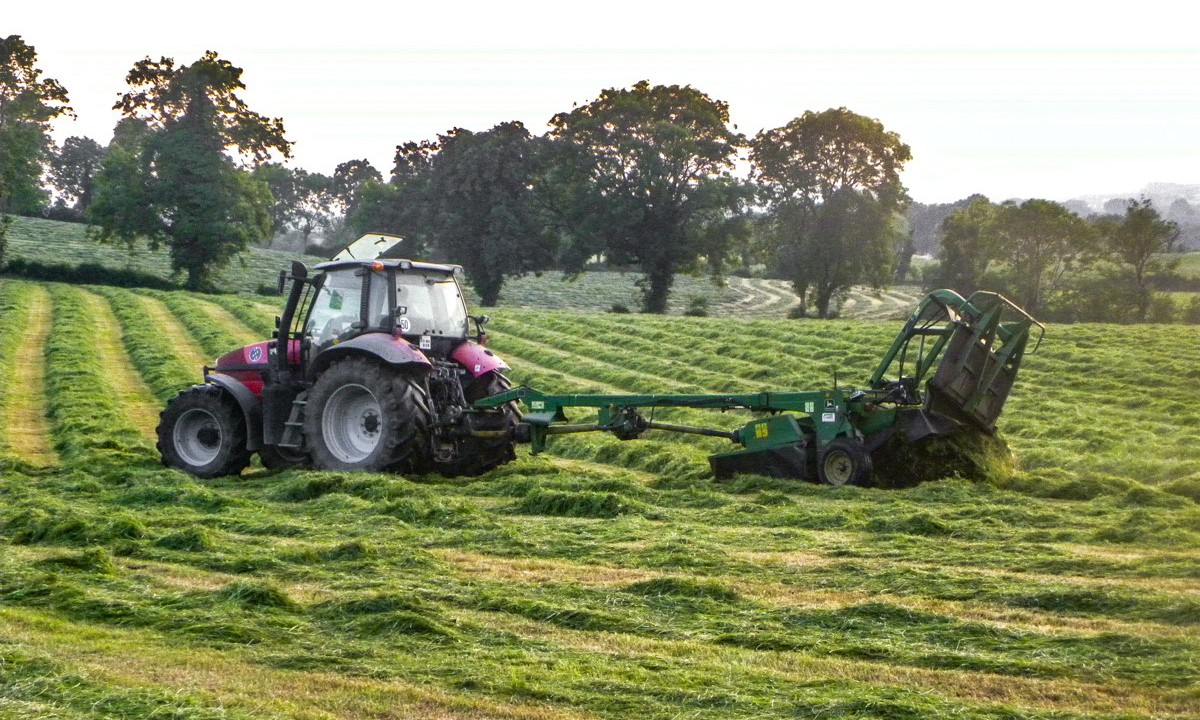Over the next few weeks, the task of gathering and storing next winter’s silage will begin.
Sometimes on sheep farms, the task of making silage can be put on hold until later in the summer. However, this will only have a negative impact on the quality of the silage that will be offered to ewes during that subsequent winter housing period.
Making silage early in the season, typically in mid-to-late May and early in June, will give farmers the best chance of storing highly-digestible feed that will have a positive impact on ewe performance.
If farmers can offer ewes silage that has a high dry matter digestibility (DMD) it can possibly reduce the amount of concentrates that will have to be fed in late-pregnancy.
If we can put highly-digestible silage in front of ewes during the housing period, it will help to improve their body condition score (BCS). Feeding poor-quality fodder will only end up in farmers having to supplement extra concentrates in order to get ewes in good condition and to try and avoid health problems in late pregnancy.
The fact that the housing period for sheep is relatively short in comparison to other livestock systems, this should offer sheep farmers a better chance of focusing on producing good-quality fodder, as the amount of feed required for the winter period will be less.
So, in order to make good-quality silage, the following points should be considered.
These include:
- Plan to cut grass in mid-to-late May or early in June;
- Walk silage ground at least once a week to determine when it is fit to cut;
- Cut grass when it’s leafy – before the grass heads out;
- Don’t delay the harvesting date if possible. Delayed cutting might produce a heavier crop, but it will reduce the nutritional value of the crop;
- If you plan to let the crop wilt, then allow for a wilting period of 24-36 hours;
- Keep an eye on the weather forecast. Don’t cut grass when the weather is promised wet.
Rotational system
If you are implementing a rotational system on your farm, then it is important that paddocks are taken out and baled as soon as possible.
Farmers should avoid letting ewes graze excessive grass covers, as the grass won’t be fully utilised and more than likely the grass will have headed out which, in turn, will reduce the nutritional value of the sward.
Ideally, farmers should be letting their ewes graze covers that are between 7cm and 9cm in height.
By taking out an odd paddock here and there you will be able to store good-quality silage, but also reintroduce that paddock back into the grazing block – which, in a couple of weeks, if fertiliser is applied and weather conditions are good, will have a good cover of grass for ewes and lambs to graze.
In saying that, don’t go overkill on taking out paddocks. Pick and choose the fields you think are the heaviest and go from there. Taking out a large number of fields in a short space of time could lead to a grass deficit on the farm.
We have seen in previous years and in the last week or two that this time of the year can be quite dry, so we don’t want to end up in a situation where we are going to be tight for grass.

